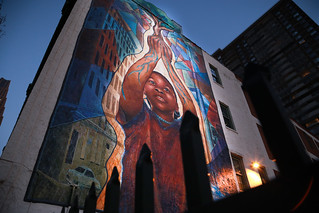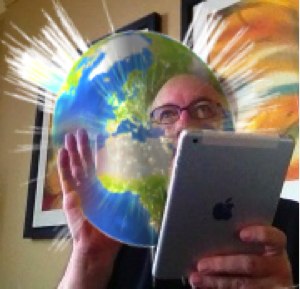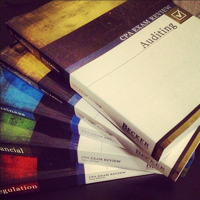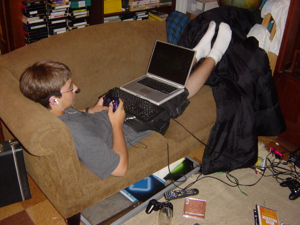Educon 2013 is over and I’m on my way home, the Carolinian, Train number 79, on time with a passable WiFi connection. During this year’s conversations, I tried a new app and technique for taking notes. The App is GoodNotes, which is like a couple of dozen other stylus-based note-taking apps. What I like about this particular one is your ability to connect it with the iPad’s camera and integrate pictures into your notes. 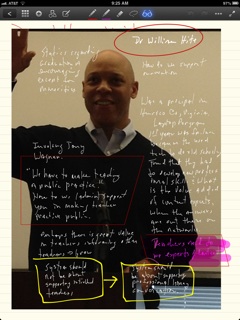 This, I believe, would be extremely valuable when attending presentations that relied heavily on diagrams and other visual media. It wasn’t ideal for Educon, who’s conversations were less dependent on slides, but I did include pictures of the presenters as a reminder, when reviewing the notes. (see right)
This, I believe, would be extremely valuable when attending presentations that relied heavily on diagrams and other visual media. It wasn’t ideal for Educon, who’s conversations were less dependent on slides, but I did include pictures of the presenters as a reminder, when reviewing the notes. (see right)
I typically use a mind-mapping program, so that I can organize ideas in relation to others. But I’ve always missed the freedom of a blank page. Writing notes with a stylus has all sorts of disadvantages, but I can already see that I am going back to review my notes much more frequently than I have ever scanned my mind maps.
I confessed to a number of people yesterday, that I attend these things, not so much for new knowledge as for new language. I do not manage a school or classroom, so I am not looking for solutions. I need new ways of talking about education in the age of opportunity – which is often counter-intuitive to the my audiences’ vision of classrooms. New angles, phrases or new stories help to produce shakabuku. They sneak up on the listener and surprise them with new realizations.
The first thing I think, when seeing a panel for educators made up of non-educators is, “Why do we assume that business inherently does it better?” I have to confess that after the panel discussion was over and and I was trudging back up to my hotel (why’s going home always up hill?) through the (more slippery than it looked) snow, I asked myself that question – probably out loud.
But rehashing parts of it early the next morning and reviewing my notes, I see lots of ideas that, when unpacked, apply wonderfully to teaching, learning, and classrooms. Here are some phrases from Jeff Pulver, an entrepreneur and venture capitalist.
- Teachers should model entrepreneurship! I include this statement only because It comes up frequently during unconference sessions on education and entrepreneurship. If we want our children to be creative, then we need to practice creativity in front of them.
- Voice is an application! I’m still trying to wrap my mind around this one, but according to Wikipedia, “an ‘app’ is computer software designed to help the user to perform specific tasks.” One could say that giving voice to learning helps learners to accomplish something with what they’ve learned.
- The fuel for disruption is passion! This one makes a lot of sense to me. Disruptive technologies, techniques and processes change nothing unless someone is passionate enough to audaciously and heroically use them. Learning is disruptive. If it wasn’t, what would be the point?
Are we fueling our students’ learning?
- Be willing to break the rules! I keep playing around with the idea that rules, in school, are designed to contain the learning. However, in the real world, rules are a way of mapping the perceived constraints of reality. Those who accomplish goals creatively do so by rewriting the rules – reshaping the confines of reality. Personally, I prefer “changing the rules” or “re-writing the rules” to “breaking the rules.”
- Find People who don’t know it can’t be done! Is this an overlooked value of new teachers. I keep thinking that there is great potential to pairing experienced teachers with new teachers, when solving education problems – so long as each is willing to learn from the other.
- Make exercise fun! This one hit hard. It’s one of my regrets, as I approach the end of my career, that I have not thought enough or talked enough about our children’s physical education. I think that Pulver, from his own recent experiences in losing so many pounds, was spot-on, that “Exercise should be fun.”
But, for many, it’s not. I’ve never gotten anything from endorphins, though my wife use to claim an addiction to her afternoon jogs. Perhaps its an A.D.D. thing, because the only effect I feel from the (prescribed) stimulants I sometimes take is that I can suddenly express myself in a little more linear fashion. But no other physical sensation.
Some people don’t like sports. I was good at baseball and football, and played on school teams. But I never took the whole winning/losing thing very seriously – and never had fun playing with people who did.
Some people aren’t good at sports. One of my brothers could run faster than anyone in four blocks. But he never learned to catch a ball gracefully.
How do you make exercise fun? Here are a few thoughts.
- Sports should not be limited to those who are good at it and only for the good of the school. Invite everyone to play and celebrate the play. Playing is fun. Winning requires losers.
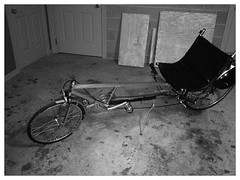 Find new ways to ride. I’ve been a bicycle rider since college, although not like some. But now, I find riding to be painful to my wrists, hands, knees, and, well, the obvious places. So I’ve recently purchased a used (1987) recumbent bike, which is fun for me because it’s a new way to ride, and because I’m having fun learning how to ride it (and keep my feet on the peddles).
Find new ways to ride. I’ve been a bicycle rider since college, although not like some. But now, I find riding to be painful to my wrists, hands, knees, and, well, the obvious places. So I’ve recently purchased a used (1987) recumbent bike, which is fun for me because it’s a new way to ride, and because I’m having fun learning how to ride it (and keep my feet on the peddles). - Find new human-powered routes. Greenways are huge in large cities, and I’m starting so see them in smaller cities. There are also some instances of walking and biking trails that connect towns, which is something I noticed a lot of in Germany. I believe that there’s a trail between Richmond, Virginia and the shore. Go to TrailLink to find trails in your state and community.
- Find new places to walk to. Just walking or biking is often not compelling enough. There need to be reasons to be on those trails, places to go, reasons to be on your feet. Making your community more bicycle and pedestrian friendly is essential. But how do you make them desirable or fashionable to use. Ask students to invest in them by devising solutions. Take a picture of your downtown and ask students to edit the picture, adding features for the self-propelled. Ask a Maker class to design and build bicycle racks for your community and work with stores and municipal establishments to install them. Get creative. Get going on your own two feed.



